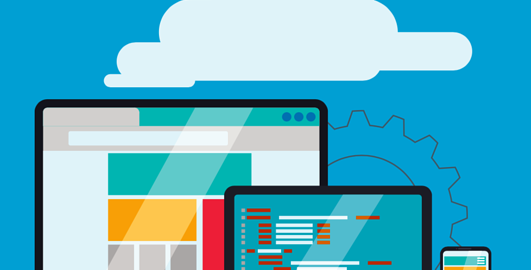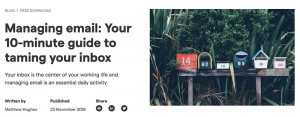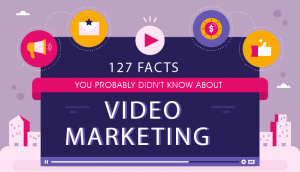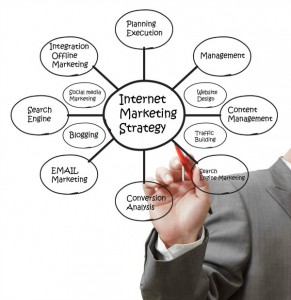Your leads are in your database for a reason – they trust you. They view you as a credible resource for helping them solve a specific problem they have.
Congratulations! You nailed your lead generation strategy if you’re filling your CRM with awesome people who might buy from you.
This is a great opportunity for you to continually educate and delight them, which is where lead nurturing comes in.
What Is Lead Nurturing? 6 Elements of a Campaign
This is where you start building the relationship after the initial connection. Most leads are not typically ready to buy right from the start, but they could be your perfect customer.
The only way to know that is through deepening your connection with them, which you can accomplish through lead nurturing campaigns.
These campaigns consist of the following elements.
Lead Magnets
These are content offers that speak to your audience’s pain points and entice them to visit your site and convert into a lead by providing their contact information. When you get their email, they receive a link to download your magnet.
Landing Pages
You host lead magnets/content offers on landing pages. You want to include content that highlights the benefits of the offer to make it irresistible for them to download it, which they do through a form.
Personalization
Thanks to marketing software, you can deliver personalized content. This touch of personalization is engaging, making your visitors feel seen and understood.
Segmentation
Your marketing software provides features to help you break your recipients up into segments, which you can build based on data like demographic information or certain behaviors.
Nurturing Content
Throughout your campaign, leverage premium content to move leads through each stage of the buyer’s journey. For example, whitepapers can further establish your credibility, and case studies can prove your expertise in helping customers who your leads can relate to.
Emails
You continually engage and educate your leads through email content. These are delivered through workflows, which you build using your marketing software.
What Is a Lead Nurturing Workflow?
A lead nurturing workflow is your process of delivering automated touches to build your relationship with your contacts. They’re characterized as being hyper-personalized, based on your segmentation strategy.
For example, you can enroll highly rated leads who took a specific action on your website, like visited your pricing page, in a workflow. Your content can be geared toward educating them about topics related to your services, moving them from the awareness stage to decision.
Your marketing automation software is a major component of building your workflows. There are so many different platforms you can use, the most notable ones being:
- HubSpot
- Marketo
- Pardot
- Salesforce
No matter what software you use, you can create an effective lead nurturing workflow in a few simple steps.
5 Steps for Creating a Lead Nurturing Workflow
In five easy steps, you can create a kickass campaign that moves interested leads to consideration and eventually the decision stage.
1. Establish Goals For Your Campaign.
This is essential for any marketing initiative. You need a smart goal that aligns with your business’s big-picture objectives.
For example, you might want to encourage leads to download an offer that is in the middle or bottom of the funnel, like a whitepaper or comparison sheet. Other goals can center on getting demo requests, driving traffic to a specific webpage, or getting contracts signed.
2. Identify the Target Audience.
Once you have your goal in mind, you can look at your contact database and determine who to focus on. You can use your buyer personas and your ideal customer profiles to inform this step.
Dive deeper into contact data in your CRM to determine if and how you want to segment and personalize this campaign. For example, you can segment high quality MQLs by the last offer they downloaded and tailor the content you send to be relevant to the topic of that offer they previously downloaded.
3. Map Your Content to Each Stage of the Buyer’s Journey.
Relevance is a top priority for the content you create for lead nurturing, which is why you need to know exactly where your target audience is in the scope of the buyer’s journey.
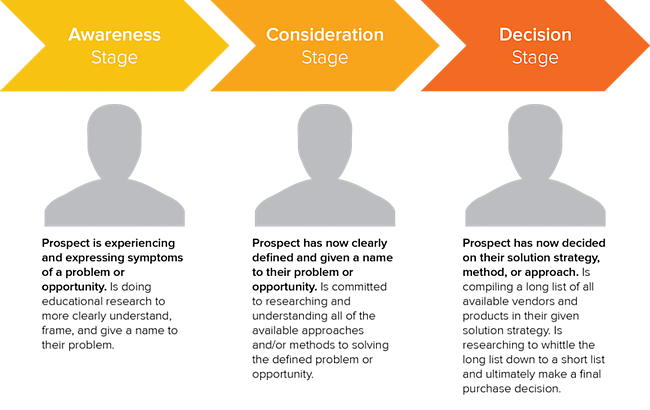
Source: HubSpot
During the awareness stage, your leads are at least experiencing symptoms of a problem or are first becoming aware of their challenge. Leads in this stage only show you a little information about them. You have a basic understanding of what they interact with on your site.
The consideration stage takes place when your leads start actively searching for solutions. You’ve likely gained a bit more information on leads in this stage, which can help inform how you tailor content to them.
Finally, the decision stage is when leads are ready to buy. Your content in this stage is often positioning your company as the go-to resource for solutions.
Here are some content ideas you can create for each stage during this lead nurturing campaign.
Awareness Stage Content
- Educational videos – Walk viewers through how to accomplish a goal or perform a specific task.
- Visually appealing infographics – Break down complicated information into easy-to-understand, small chunks, and present it in a cool way.
- Blog posts – Teach your readers about trends and best practices, and showcase thought leadership on industry-specific areas.
- Interactive quizzes – Provide fun quizzes that your audience wants to take and use them to capture lead information.
Consideration Stage Content
- Email newsletter – Continue to deliver educational content to their inboxes to stay top of mind and help them understand the approaches they have available to address their pain point.
- Event promotions – Host events tailored to a specific problem and drive registrations by promoting it to your list.
- In-depth ebook – Dive deep on a specific topic that your audience needs more information on.
- Case studies – Show them real examples of how people like them are using your products or services to address a similar pain point.
Decision Stage Content
- Pricing content – Share your pricing structure, and make sure the content you provide has a clear breakdown of the benefits of each option.
- Free trials – Provide access to your products or services for a limited time so they can actually use them and see the advantages.
- Demos for products/services – Walk your audience through a demonstration to show them how easy it is to address their pain points.
4. Set Up Your Workflow in Your Marketing Software.

Depending on your marketing software platform, you can build a workflow in a variety of ways. Some examples include the following:
Welcome Workflows
Welcome new newsletter subscribers by delivering more value through a series of emails with CTAs that point them to relevant additional offers they would gain value from.
Topic Workflows
Determine what topics your leads are interested in. You can target based on journey stage, send related content, and measure responses to see what content they engage with the most.
Asset Offer Workflows
When you know what content recipients are interested in, you can use these workflows to send additional content offers that align with all three stages of the buyer’s journey.
Engagement Workflows
These are meant for decision stage leads specifically, so you want to deliver content that positions your brand as the best solution and keep yourself top of mind.
Re-engagement Workflows
To reignite cold leads, you can use these workflows, where you send content to get back on their radar.
Customer Workflows
You can develop these to delight customers, gain their perspective on their experience, and even cross-sell and upsell.
5. Review Results to Find Areas to Optimize for Success.
At this stage, you created your email content based on audience research and set up your automation in your marketing platform. Once the campaign is launched, start monitoring results.
Your key performance indicators (KPIs) should be based around your smart goals, which you already established before launching the campaign. For example, if your goal is to get SQLs to close, you would be measuring metrics like time-to-customer conversion.
As you measure and review your analytics, make notes on what lessons you’ve learned. This data helps you optimize your efforts over time and informs your next lead nurturing campaigns.
Business & Finance Articles on Business 2 Community
(33)
